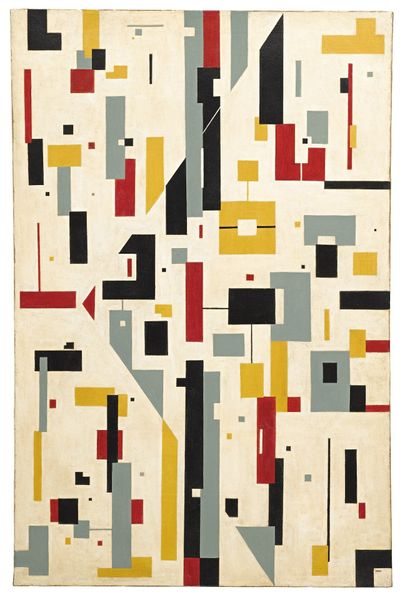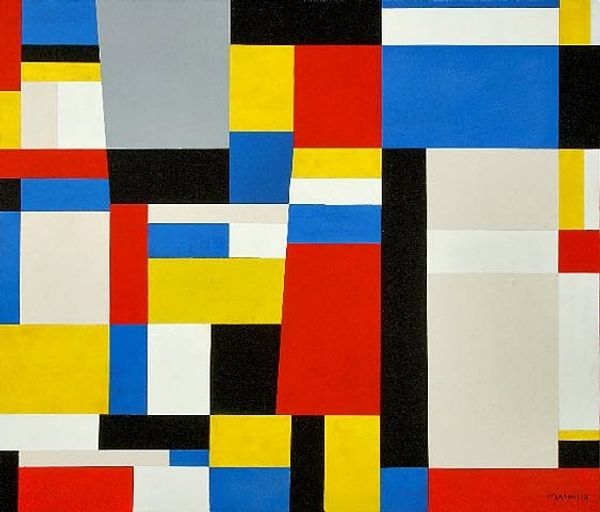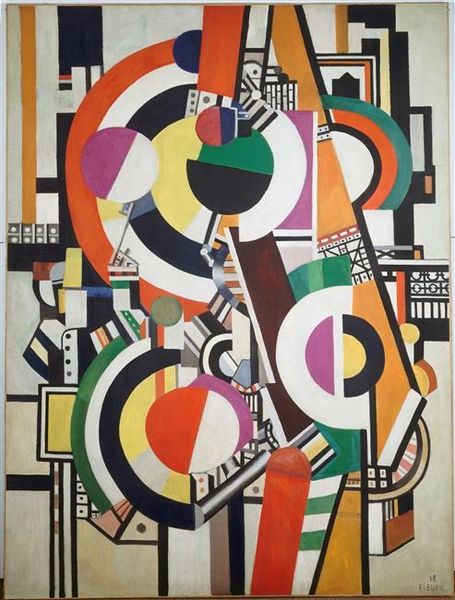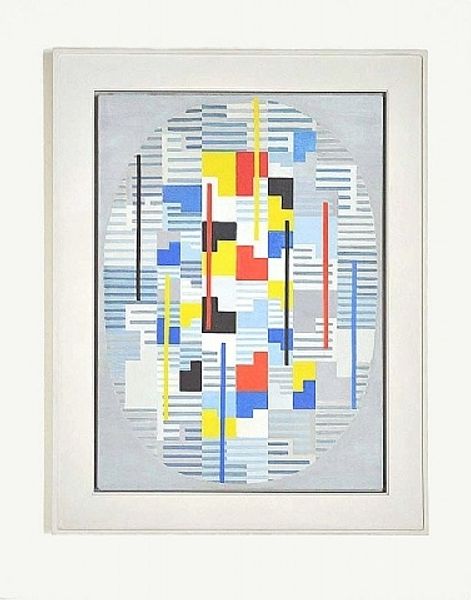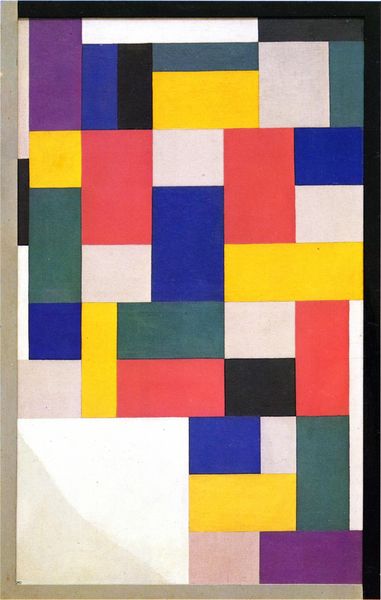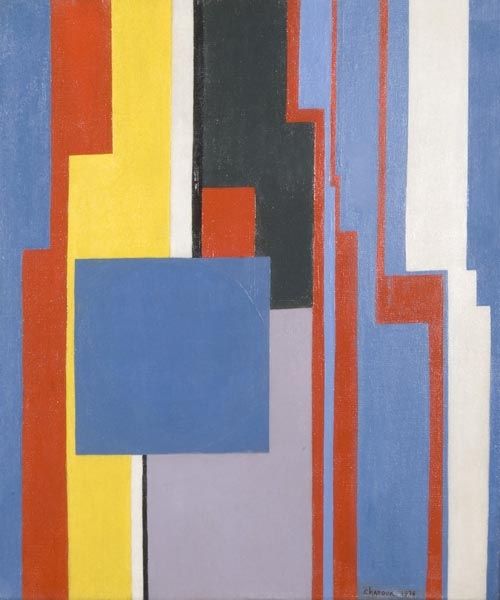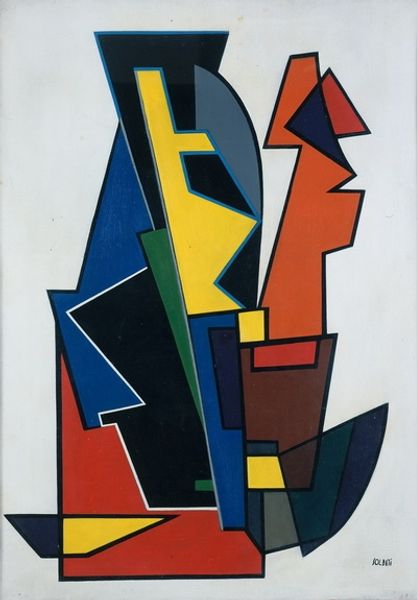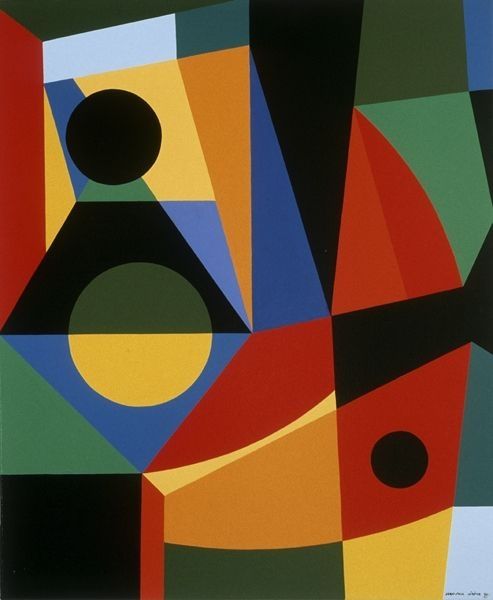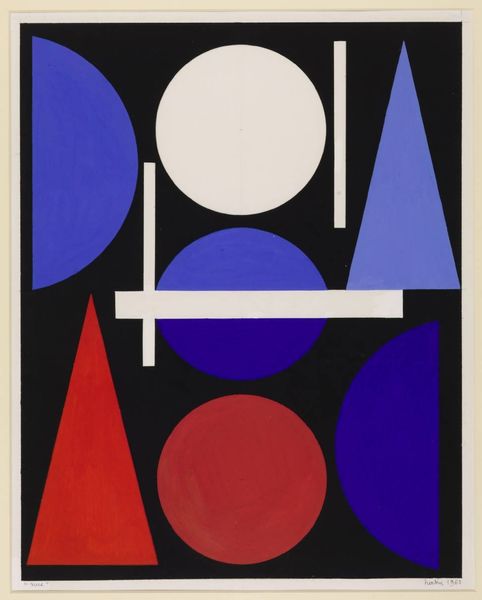
acrylic-paint
#
concrete-art
#
geometric composition
#
constructivism
#
acrylic-paint
#
geometric pattern
#
abstract pattern
#
geometric
#
abstraction
#
line
Copyright: Adolf Fleischmann,Fair Use
Curator: Adolf Fleischmann's "Nr. 39a" from 1955. An exemplary instance of concrete art painted in acrylic. Editor: Striking, isn't it? My first thought is about its intense clarity and precise arrangement of forms, there is an underlying sense of balance even as it feels dynamically offset. Curator: Precisely. What we’re seeing here is deeply influenced by Constructivism, particularly the emphasis on geometric abstraction. Fleischmann, of course, was engaging with wider European dialogues around social change post-war. The interplay between forms also embodies critical issues of reconstruction through fragmentation. Editor: When looking at this, my focus drifts to Fleischmann’s calculated selection of materials, and his active decision making as the maker and selector. This wasn’t just sketching something out on canvas; it involves deliberate labor with acrylic and compositional consideration. Curator: Indeed. Fleischmann rejected representation, creating purely abstract forms meant to evoke an experience beyond the physical world. He uses simple forms to articulate his thoughts. If we contextualize his time within post-war thinking, can we understand his simplification of geometric form, to address larger social change and trauma, for example? Editor: Definitely. But consider how each choice of pigment carries inherent values tied to consumption and availability; in the use of colors, he reflects and engages with what it meant to exist materially as an artist in 1950's Germany. How were materials obtained? Curator: The color palette echoes a certain Bauhaus sensibility, I see. But look at his use of color to challenge conventions. Do you notice the lines between primary colors creating tension, almost? Are they creating separate identities here? This speaks about challenging art with social critique, doesn't it? Editor: Definitely. While that tension might be true in part due to colors, the grid structures are integral, also: How did he go about meticulously composing these geometric blocks? That deliberate hand craft should never be discounted as simply form; instead, its a dialogue between artistry and material, engaging at both the micro and macro levels. Curator: Very well articulated. Overall, Fleischmann provokes a lot of challenging questions by synthesizing social implications and pure form. Editor: I agree. Its geometric precision, the materials, speak for themselves; but when engaging, we must question all these complex social implications tied into abstraction.
Comments
No comments
Be the first to comment and join the conversation on the ultimate creative platform.
